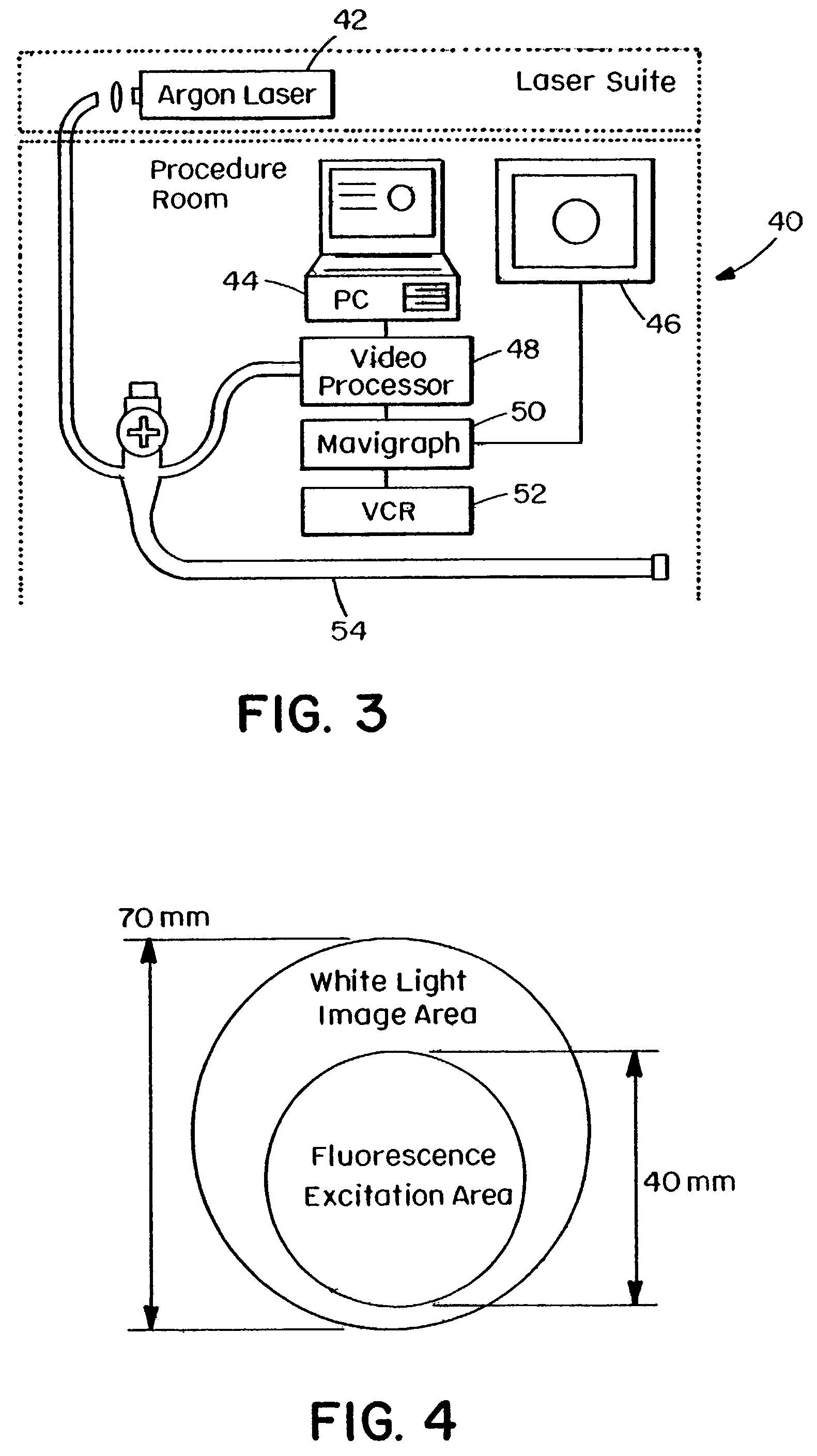Fluorescence imaging endoscope
a fluorescence imaging and endoscope technology, applied in the field of laser-induced fluorescence imaging endoscopes, can solve the problems of significant parallax between the white light image of the ccd and the fluorescence image of the optics module, and achieve the effect of perfect registration of these two images, simplified system design, and higher total image resolution
- Summary
- Abstract
- Description
- Claims
- Application Information
AI Technical Summary
Benefits of technology
Problems solved by technology
Method used
Image
Examples
Embodiment Construction
[0026]The equations describing the number of signal photons, Ns, collected by a given pixel in an endoscope as a function of the separation distance d and the radial distance ρ on the tissue surface, and the corresponding SNR are as follows:
[0027]Ns(p)=ηsλemg2TfTiTofprL2ɛt(λem,Δλ)tanθm2Po(λex)Δthc8(1-cosθm)Nfd2(1+(pd)2)3.5SNR=NsNs+(σeG)2(1)
The geometry and certain symbols are defined in FIG. 1. Note also the emission wavelength λem, pixel array size g×g, fiber optic transmission efficiency Ti, the bandwidth of the filtered emission wavelength Δλ, the fraction of the transmitted energy in this wavelength region Tf, the collective efficiency To of the system optics including the long pass filter, lens and eyepiece, incident light energy Po(λex)Δt,h is Planck's constant, c is the speed of light, fp is the packing fraction of the fiber cores εt is the quantum efficiency of the tissue, and Nf is the total number of resolution elements. The signal to noise rat...
PUM
 Login to View More
Login to View More Abstract
Description
Claims
Application Information
 Login to View More
Login to View More - R&D
- Intellectual Property
- Life Sciences
- Materials
- Tech Scout
- Unparalleled Data Quality
- Higher Quality Content
- 60% Fewer Hallucinations
Browse by: Latest US Patents, China's latest patents, Technical Efficacy Thesaurus, Application Domain, Technology Topic, Popular Technical Reports.
© 2025 PatSnap. All rights reserved.Legal|Privacy policy|Modern Slavery Act Transparency Statement|Sitemap|About US| Contact US: help@patsnap.com



